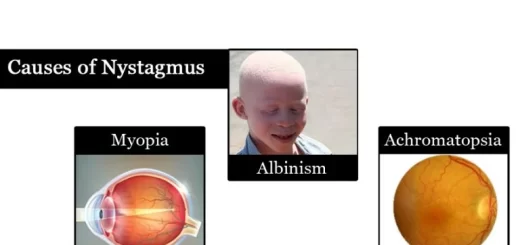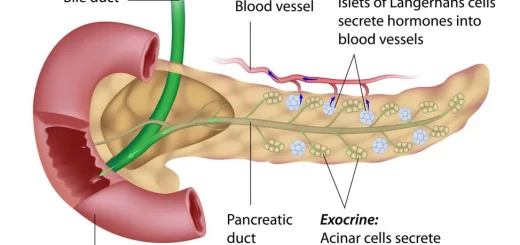Leg structure, muscles, nerves, bones, anatomy and function
The human leg is the lower limb of the human body, It includes the foot, thigh, and hip or gluteal region, Legs are used for standing, and all forms of locomotion including recreational such as dancing, and constitute a significant portion of a person’s mass. Female legs have greater hip anteversion and tibiofemoral angles, but shorter femur and tibial lengths than those in males, The leg from the knee to the ankle is called the crus or cnemis.
Cutaneous nerve supply of the leg
- Saphenous nerve (from femoral nerve L2.3.4): Supplies anteromedial, posteromedial aspects of leg and medial border of the foot up to the base of big too.
- The lateral cutaneous nerve of the calf (from the common peroneal nerve): Supplies upper parts of anterolateral and posterolateral aspects of the leg.
- Superficial peroneal nerve (from the common peroneal nerve): Supplies lower part of anterolateral aspects of the leg.
- Sural nerve (from the tibial nerve): Supplies lower part of postero-lateral aspects of the leg (also lateral border of the foot up to the tip of little toe).
Compartments of the leg
The deep fascia of the leg sends 2 intermuscular septa (anterior and posterior) to the fibula. The 2 septae and interosseous membranes divide the leg into 3 compartments (anterior, lateral & posterior).
Muscles
Anterior compartment:
- Tibialis anterior.
- Extensor halluicis longus.
- Extensor digitorum longus.
- Peroneus Tertius.
Lateral compartment:
- Peroneus longus.
- Peroneus brevis.
Posterior compartment:
- Superficial group: (Gastrocnemius – Plantaris – Soleus).
- Deep group (Tibialis posterior- Flexor halluicis longus- flexor digitorum longus- popliteus).
Nerve supply:
- Anterior compartment: Anterior tibial nerve (deep peroneal).
- Lateral compartment: Musculocutaneous nerve (superficial peroneal).
- Posterior compartment: Tibial and posterior tibial nerves.
Blood supply:
- Anterior compartment: Anterior tibial artery.
- Lateral compartment: Peroneal artery.
- Posterior compartment: Posterior tibial artery.
Anterior compartment of the leg
Origin:
- Tibialis anterior: Upper 1/2 of the lateral surface of the tibia.
- Extensor Halluicis longus: Middle 2/4 of the anterior surface of the fibula and interosseous membrane.
- Extensor Digitorum longus: Upper 3/4 of the anterior surface of the fibula.
- Peroneus Tertius: Lower 1/4 of the anterior surface of the fibula.
Insertion:
- Tibialis anterior: medial cuneiform bone and the adjoining part of the base of the 1st metatarsal bone.
- Extensor Halluicis longus: dorsum of the base of the distal phalanx of the big toe.
- Extensor Digitorum longus: Extensor expansions of lateral 4 toes.
- Peroneus tertius: Base of 5th metatarsal bone.
Nerve supply:
- Tibialis anterior: Anterior tibial nerve (deep peroneal).
- Extensor Halluicis longus: Anterior tibial nerve (deep peroneal).
- Extensor Digitorum longus: Anterior tibial nerve (deep peroneal).
- Peroneus Tertius: tibial nerve in the popliteal fossa.
Action:
Tibialis anterior:
- Dorsiflexion of the foot.
- Inversion of the foot.
- Maintain medial.
- The longitudinal arch of the foot.
Extensor Halluicis longus:
- Dorsi-flexion of the foot.
- Extension of all joints of the big toe.
Extensor Digitorum longus:
- Dorsi-flexion of the foot.
- Extension of all joints of lateral 4 toes.
Peroneus Tertius:
- Dorsi-flexion of the foot.
- Eversion of the foot.
Lateral compartment of leg
Origin:
- Peroneus longus: Upper 2/3 of the lateral surface of the fibula.
- Peroneus brevis: Lower 2/3 of the lateral surface of the fibula.
Insertion:
- Peroneus longus: medial cunei bone and the adjoining part of the base of the 1st metatarsal bone.
- Peroneus brevis: Base of 5th metatarsal bone.
Nerve supply:
- Peroneus longus: Musculocutanous nerve (Superficial peroneal).
- Peroneus brevis: Musculocutanous nerve (Superficial peroneal).
Action:
Peroneus longus:
- Plantar flexion of foot.
- Eversion of foot.
- Maintain transverse arch of foot.
Peroneus brevis:
- Plantar flexion of foot.
- Eversion of foot.
Posterior compartment of the leg
A- Superficial group
Origin:
Gastrocnemius:
- Medial head: from the popliteal surface of the femur above the medial condyle.
- Lateral head: from the lateral surface of the lateral condyle.
Plantaris: The popliteal surface of the femur just above the lateral condyle.
Soleus:
- Upper 1/3 of the posterior surface of the fibula.
- The tendinous arch between the tibia and fibula.
- Soleal line of the tibia.
Insertion:
- Gastrocnemius: By tendo-calcaneus into the posterior surface of calcaneus.
- Plantaris: Posterior surface of the calcaneus.
- Soleus: By tendo-calcaneus into the posterior surface of calcaneus.
Nerve supply:
Gastrocnemius: Medial popliteal (tibial) nerve.
Plantaris: Medial popliteal (tibial) nerve.
Soleus:
- Medial popliteal (tibial) nerve.
- The posterior tibial nerve.
Action:
Gastrocnemius:
- Plantar flexion of the foot.
- flexion of the knee joint.
Plantaris:
- Plantar flexion of the foot.
- flexion of the knee joint.
Soleus: Plantar flexion of the foot.
B- Deep group
Origin:
Tibialis posterior:
- The posterior surface of the tibia below soleal line and lateral to the vertical line.
- The posterior surface of fibula medial to the medial crest.
- Interosseous membrane.
Flexor Digitorum longus: Back of the tibia below the soleal line and medial to the vertical line.
Flexor Halluicis longus: Lower 2/3 of the posterior surface of the fibula.
Popliteus: The popliteal groove of the lateral condyle of the femur.
Insertion:
Tibialis posterior:
- Tuberosity of navicular bone and medial cuneiform.
- All tarsal bones except talus.
Flexor Digitorum longus: Terminal phalanges of the lateral four toes.
Flexor Halluicis longus: Terminal phalanges of the big toe.
Popliteus: Back of tibia above the soleal line.
Nerve supply:
Poster tibial nerve.
Action:
Tibialis posterior:
- Plantar flexion of foot.
- Inversion of the foot.
- Maintain medial longitudinal arch of the foot.
Flexor Digitorum longus:
- Plantar flexion of foot.
- Flexion of all joints of lateral 4 toes.
- Inversion of the foot.
- Maintain medial longitudinal arch of the foot.
Flexor Halluicis longus:
- Plantarflexion of foot.
- flexion of all joints of the big toe.
- Inversion of the foot.
- Maintain medial longitudinal arch of the foot.
Popliteus: Unlocking of the knee: medial rotation of the tibia on the femur or lateral rotation of the femur on the tibia when the foot is on the ground.
Leg nerves types, Injuries of nerves of the lower limb & Sciatica causes
Popliteal fossa structure, Skeleton of the leg, Shaft & Joints of tibia
Medial compartment of thigh muscles, Growth & regeneration of smooth muscle fibers
Gluteal region structure, muscles, nerves & Posterior compartment of thigh muscles



